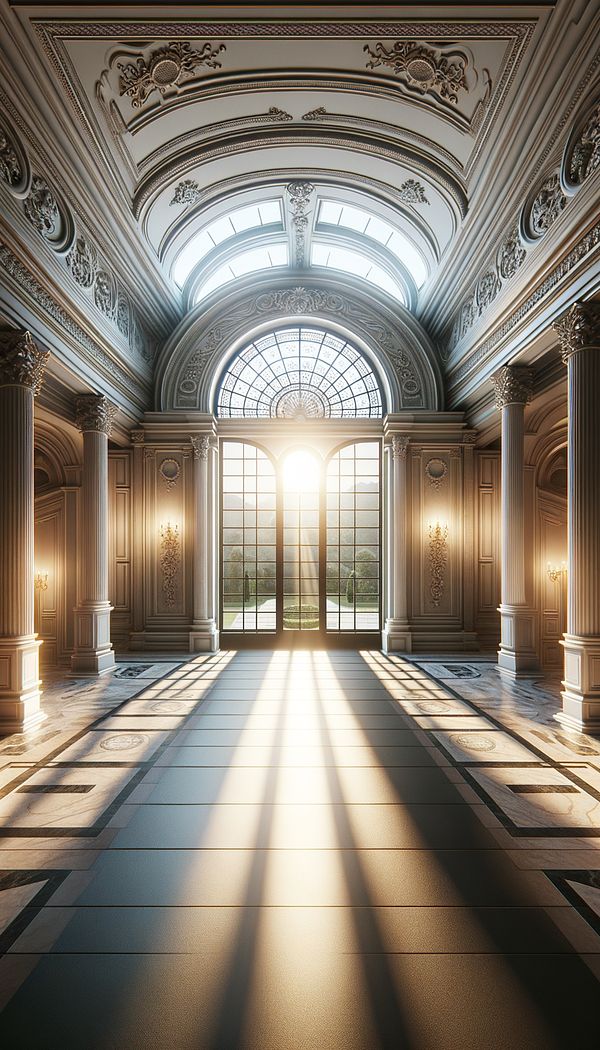What is a Palladian Window?
A Palladian Window is a large window that is divided into three parts, with a semicircular arch over the central section.
Description
A Palladian Window, named after the Italian architect Andrea Palladio, is an iconic feature in both classical and neoclassical architecture. Composed of a central window arched at the top and flanked by two smaller, rectangular windows at either side, its design forms a harmonious balance that has captivated designers and homeowners alike. Central to the elegancy of a Palladian window is the semicircular arch that sits atop the middle window, often adorned with a keystone that adds a focal point. The side windows are usually of the same height but narrower and are sometimes referred to as sidelights.
This style of window not only enhances the architectural beauty of a building but also allows abundant natural light to flood into interior spaces. Due to its classical roots, the Palladian window is often associated with opulence and grandeur, making it a popular choice for public buildings, stately homes, and luxury residences. However, adaptations of this architectural element can also be found in more modern settings, providing a timeless appeal that bridges the gap between traditional and contemporary design.
Incorporating a Palladian window into a design project requires careful consideration of the building's structural integrity, as its size and complexity can present unique challenges. Despite this, the visual impact and aesthetic value it adds make it a coveted element in the realm of interior design and architecture.
Usage
Palladian windows are often used in the design of public buildings such as libraries, city halls, and religious structures, as well as in luxury residential homes. Their ability to introduce light and elegance into a space makes them a favorite feature in entrance halls, living rooms, and other prominent areas of a home. They are also seen in conservatories and sunrooms, where maximizing natural light is a key design consideration.
FAQs
-
Who is credited with the design of the Palladian window?
The Palladian window is named after Andrea Palladio, an Italian architect who popularized the design in the 16th century.
-
Can Palladian windows be incorporated into modern architecture?
Yes, Palladian windows can be adapted for modern architecture, providing a classic touch to contemporary designs without sacrificing the modern aesthetic.
-
What are some common challenges with installing Palladian windows?
Common challenges include ensuring the structural integrity of the building due to the window's size and complexity, and finding suitable window treatments that complement the window's unique shape.
Practical Application
When incorporating a Palladian window into your design, consider the room's orientation and the quality of light throughout the day. These factors will influence how the space feels and how well the window integrates with the overall design. Additionally, explore custom window treatments that can enhance the window's architectural beauty while providing needed functionality, such as privacy or light control. Ultimately, a well-planned Palladian window can become a striking focal point that elevates the aesthetic appeal of any room.
-
Architectural Elements199 articles
-
Design Styles478 articles
-
Lighting111 articles
-
Window Treatments65 articles
-
Pencil-Post BedA pencil-post-bed is a style of bed with four thin, tapered posts.
-
Barrel VaultA barrel vault, also known as a tunnel vault or a wagon vault, is an architectural element characterized by its semi-cylindrical shape.
-
GeometricGeometric refers to the use of shapes, lines, and forms in design.
-
Wabi-SabiWabi-sabi is a Japanese philosophy that finds beauty in imperfection and transience.
-
Festoon BlindA festoon blind is a type of window covering made from fabric that gathers into pleats when raised.
